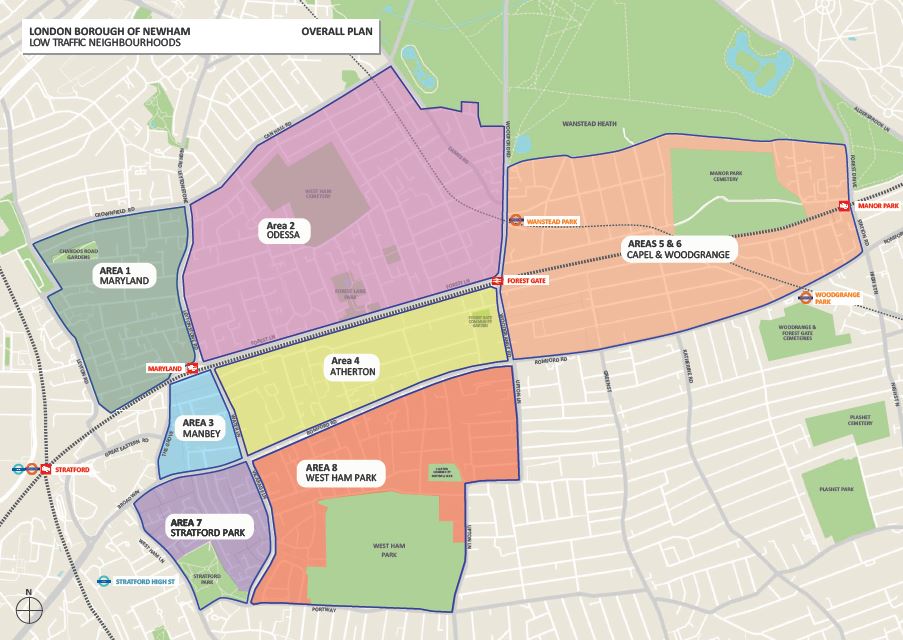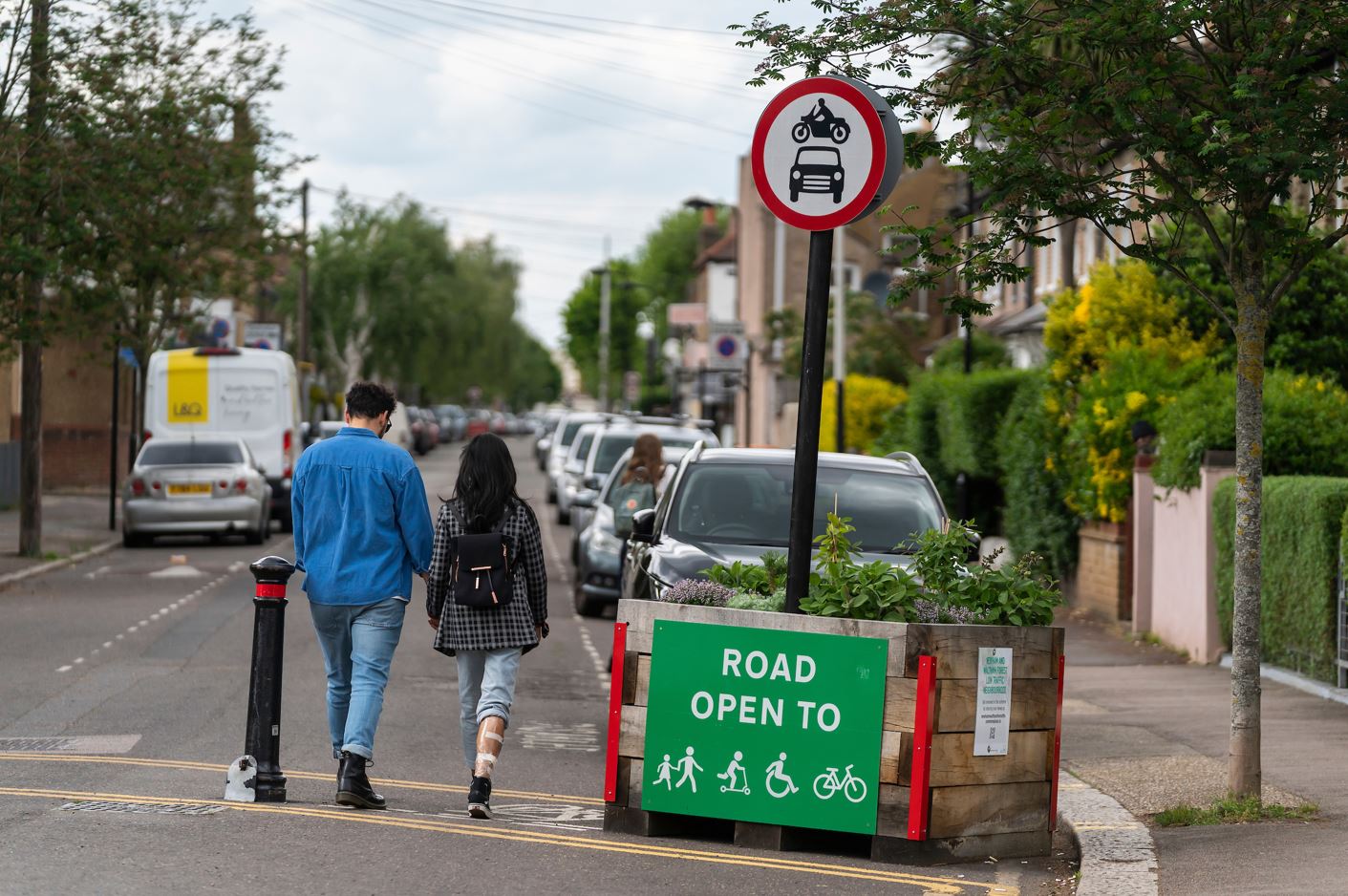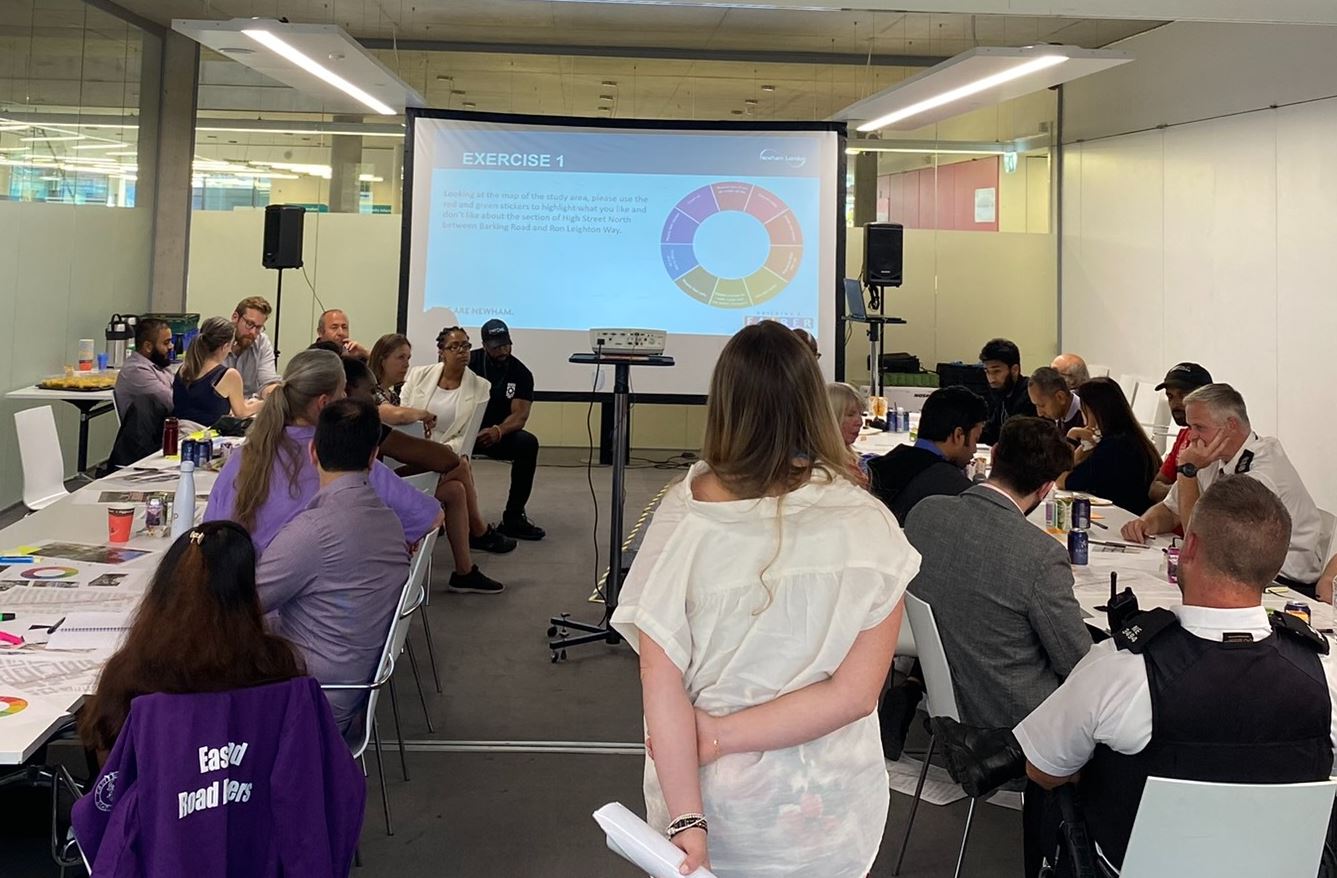People-friendly streets
Newham Council is committed to creating people-friendly streets and making it easier and safer for all our residents to consider sustainable modes of transport. Whether travelling by foot, cycling, scooting, using a wheelchair or other mobility aids, this will all contribute towards creating a cleaner and healthier borough.
What are people-friendly streets?
People-friendly streets are streets with low levels of through traffic (or no through traffic at all). They are found mainly in residential areas in which a set of modal filters has been installed to prevent motor vehicles from using the residential area as a shortcut. Excess motor vehicle traffic in residential areas causes noise, road danger and pollution; and creates a poor environment for walking and cycling. People-friendly streets aim to improve street environments and local neighbourhoods for walking and cycling by reducing traffic volumes, improving the quality of life for local residents, and making it easier for residents to choose walking or cycling for local journeys.
How do people-friendly streets work?
People-friendly streets use ‘modal filters’ to prevent motorised vehicles from using local streets as a cut-through. In the first stage of a project (the 'experimental scheme'), a modal filter is a set of two wooden planters which narrow the street at a specific point. They clearly display a sign stating that there is no motor vehicle access, and have either CCTV camera enforcement or include bollards to prevent through vehicle movements. They do, however, leave space for pedestrians, cyclists, wheelchair users, emergency vehicles and waste collection vehicles to pass through.
Can I still access my property by car?
Yes. All properties remain accessible by car. Residents may have to take a slightly different route to get from the main road to their property.
Can emergency vehicles and waste collection vehicles access every property?
Yes. Modal filters, when enforced by CCTV, are wide enough to fit all emergency vehicles and waste collection vehicles. They are exempt from modal filter enforcement.
How do people-friendly streets affect traffic on internal streets?
Internal streets are the residential streets inside the people-friendly streets scheme. One of the key objectives of people-friendly streets is to reduce traffic on internal streets. For the Maryland project, traffic on internal streets decreased by 76%. For the Odessa project, it went down 61%.own 61%.
How do people-friendly streets affect traffic on boundary roads?
Boundary roads are the main rounds that surround the scheme area. These from part of the road network. These roads have been designed to accommodate higher volumes of traffic, and will generally have a wider carriageway and footway, with buildings set back further from the road that accommodate higher vehicle and pedestrian volumes. On boundary roads, the impact ranged from a 19% increase (but falling) for the Maryland proejct, to a 3% decrease for the Odessa project.
How does the council decide if people-friendly streets should be implemented?
Once the council has identified a neighbourhood for a potential people-friendly streets project, there are three key stages, which involve extensive data collection and consideration of the evidence by the council.
1. Exploratory stage (approx. 3-6 months)
At this stage, the council gathers feedback from residents about their views regarding their streets, including air quality, road safety, walking and cycling. Traffic data, including motor vehicles, pedestrians and cycle movements are gathered. Air quality data is gathered as a baseline. If people-friendly streets are likely to improve the area, in line with broader council policies, an initial design of the project is produced, including locations for temporary modal filters. Additional feedback is sought from residents and key stakeholders regarding the outcomes of data collected and proposed project design. The council then makes a decision as to whether to proceed to the experimental scheme.
2. Experimental scheme (up to 18 months)
If the council decides to proceed with the experimental scheme, based on the results of the pre-implementation stage, then temporary modal filters are installed. These are typically wooden planters which narrow the street in certain locations, and prevent cars from driving through to prevent through-traffic in the residential area. During this stage, extensive data is gathered to measure the impact of the scheme compared to the pre-implementation stage. This includes in-depth public consultation, traffic data collection and air quality data collection. Once a sufficient evidence-base of data has been gathered, the council makes a decision as to whether or not the experimental scheme should be converted to a permanent scheme.
3. Permanent scheme
If the council decides to make the people-friendly streets scheme permanent, the council reviews potential complimentary and mitigating measures to improve the neighbourhood in the context of a permanent scheme. These measures could include: an improved design for a permanent modal filter; additional crossing points; continuous footways, dropped kerbs and other accessibility infrastructure, pedestrian and cycling infrastructure (especially on boundary roads); more trees and planting, 20 mph speed limits, etc. Even during the permanent scheme, the council continues to gather traffic data and air quality data in order to ensure that the scheme achieves council objectives.
Contact
People-friendly streets team
LiveableNeighbourhoods@newham.gov.uk



